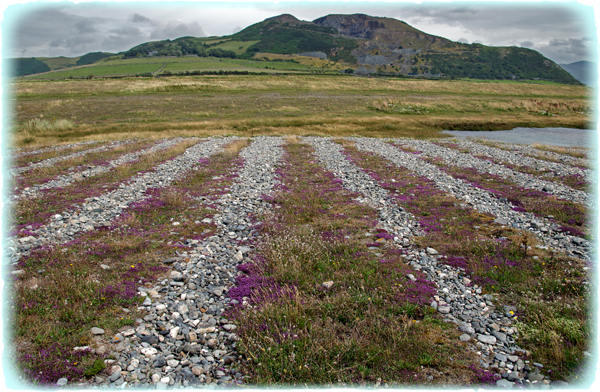Summary
Included here is vegetation associated with inland and coastal shingle deposits. Shingle is defined as sediment with a diameter larger than sand and smaller than boulders and ranges from 2mm and 200mm. In coastal zones it may develop on simple beaches or on more complex structures such as spits, barriers or barrier islands formed by long shore drift, or cuspate forelands, where series of parallel ridges pile up against the coastline. However, shingle supporting vegetation is a globally restricted habitat with few occurrences outside north-west Europe, Japan and New Zealand.

Vegetated shingle at Broadhaven in North Wales with its distinctive symmetrical stripes.
References
Fuller, R.M. 1987. Vegetation Establishment on Shingle Beaches. Journal of Ecology, 75: 1077-1089.
Oliver, F. W. 1912. The shingle beach as a plant habitat. New Phytologist, 11: 73-99
Packham J. R. 2001. Ecology and Geomorphology of Coastal Shingle. Westbury Academic & Scientific Publishing.
Randall, R. E. & Scott, G. A. M. 1997. Communities of Sand and Shingle Beaches. In: Ecosystems of the World. 2C. Dry Coastal Ecosystems. Elsevier.
Scott, E. J. 1963. The Ecology of Shingle Beach Plants. Journal of Ecology, 51: 517-527.




